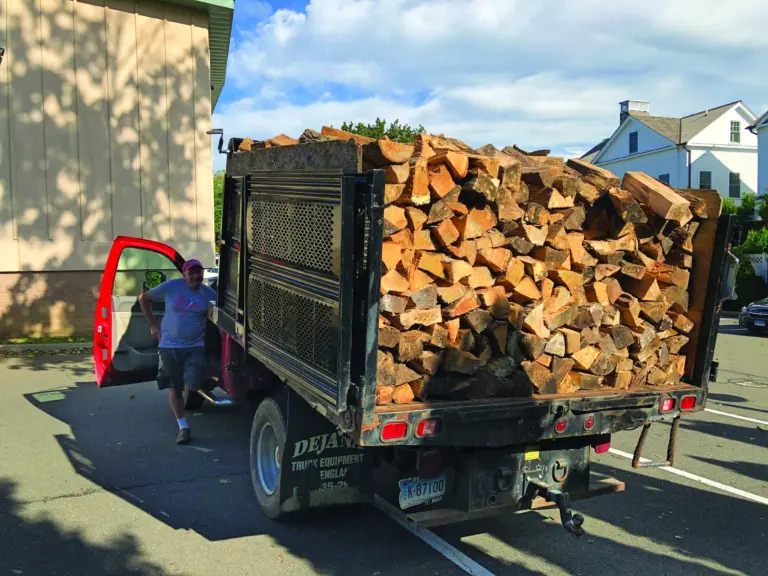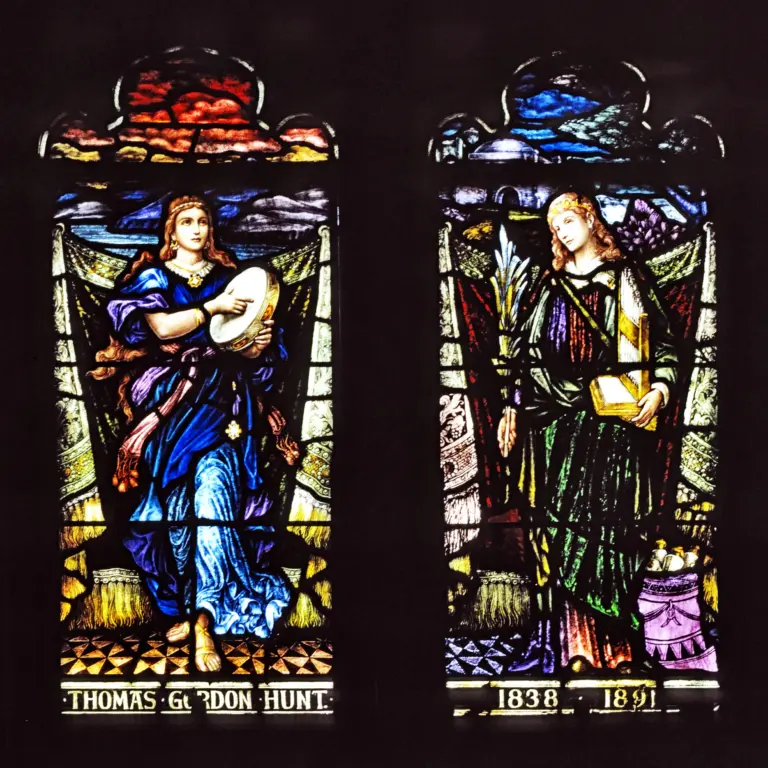
By Anne W. Semmes
New York award-winning author Laurie Gwen Shapiro had 71 attendees spellbound in Greenwich Library’s Marx Family Black Box Theater at Greenwich Library a week ago Monday telling the three-dimensional story of daring flyer Amelia Earhart, and the vital part of her mate George Palmer Putnam, once of Old Greenwich, had played in her storied fame. It’s all there in the near-500 pages of Shapiro’s book, “The Aviator and the Show Man” published this year.
Shapiro began, “More people have gotten Amelia Earhart wrong than perhaps any other person in the last century. Wrong facts about every single aspect of her life, wrong conclusions about her personality, her career, her goals, her sexuality, and her disappearance.” But “What stands out about Amelia Earhart, the real woman…She was ambitious, courageous, intelligent, curious, sexual, overconfident, lazy, kindhearted, shrewd and flawed.”
Earhart, born in 1897 in Atchison, Kansas, in a wealthy family, would study at Columbia University, before moving to Los Angelos to help with her parent’s marriage falling apart because of her father’s alcoholism. And there in 1921 Earhart learned to fly from “Frank Hawks…later famous for speed records.” She has a beau for seven years who discourages her flying, but in 1928 with her divorced mother moving to Boston, she accompanies her and becomes a social worker. Enter George Palmer Putnam.
“So, George Putnam [of the Putnam publishing firm] was married at the time to Dorothy Binney [Park] Putnam…She had Crayola crayon money.” Shapiro describes in her book how Dorothy’s mother Alice had named the Crayola company, merging the French name for chalk of craie, with ola, from oleaginous, “suggesting oiliness.” Putnam was busy encouraging a son off to a “dangerous’ expedition…for some adventure publishing.” Thus, tells Shapiro, “Putnam was willing to take tremendous risks early on.”
Shapiro shares a self-portrait of Earhart. “It’s the only known self-portrait. She had over 21 different jobs before she became famous. She tried her hand being a photographer in Southern California and that’s where this photo comes from.” Shapiro learns she’d had another lover as well, wealthy but not welcomed by her parents, his being 40 years older. But “he really wanted her to fly, and that’s what she wanted.”
The arrival of George Palmer Putnam
There was a meet up with Putnam and Earhart in New York City, at a nightclub, “the Heigh-Ho that George owned…Amelia Earhart would go to this club. She didn’t drink, but she certainly gambled.” An opportunity soon arose – surely a risk. Would she be willing to be the first woman to fly over the Atlantic as a passenger? The idea came from Amy Phipps Guest “who was the wealthiest woman in the United States” wanting to be that passenger. With her children ruling her to be “total crackers” the decision was to find a young woman who would qualify. The choice would be Amelia Earhart. A choice heralded by George Putnam, as a potential publishing coup.
“It was dangerous just to be a passenger,” tells Shapiro. She shows another photo of Earhart posed next to Lindbergh who’d made his famous cross-Atlantic flight in 1927. “This is how people saw Amelia Earhart for the first time in 1928. She has that jacket from her own piloting days, but they positioned her to look like Lindbergh, and she was called Lady Lindbergh.” And note that Lindbergh’s book, “We” was published by Putnam.
The news comes that Earhart is headed to Newfoundland. “People would fly from Newfoundland across the Atlantic because it was the shortest point.” With Earhart’s successful flight, “There was a ticker tape parade in New York,” and George Putnam was now “promoting his mistress …as the queen of aviation.” Mrs. Putnam divorces her husband, and the two move into the Putnam house in Rye, NY “that is still there on Amelia Earhart Drive.” They would marry in 1931. “And they were pretty happy in the beginning.”
“Amelia was very embarrassed that she got famous for being a passenger,” says Shapiro, “and she wanted to prove legitimately to people that women could do things that men could do. She goes in 1932 secretly up to Newfoundland again and crosses… She’s supposed to go to Paris. It’s been planned by now husband, George Putnam, to match five years to the date when Lindbergh landed in Paris. But Amelia Earhart was a brave pilot. She doesn’t land in Paris, she lands in a cow field in Ireland, but George thinks she’s dead for 12 minutes. And then when he finds out that she’s alive, he’s like, ‘We can work with that.’”

Earhart’s fame begins
So, Earhart is, “the second person, man or female, to cross the Atlantic. And you can’t be a bad pilot if you’re crossing the Atlantic by yourself. But she does have issues particularly with navigation.” Meanwhile she is being a stepmom to husband George’s two kids… “and she would go to PTA meetings,” and it’s recorded they felt “what a lovely person she was… She would teach her older stepson, David Binney, how to fly, and he was a pilot in World War II.”
“What Amelia Earhart was doing was opening doors for women. She’s pushing for women to go into aviation. The aviation industry has collapsed, and she’s almost a single ambassador for aviation. She’s getting women to take rides. She almost single-handedly saves the aviation industry.”
In that year before Earhart disappears, “Amelia and George are not getting along,” says Shapiro. “He did promise her a lot of stuff and he could deliver. He was a genius in many ways, a master marketer. He wasn’t always the nicest guy.” Listening to many tapes, Shapiro would not “hear a bad word about Amelia Earhart. People genuinely adored her, even her rivals.” But she “didn’t hear a good word about George Putnam.”
Then came that final flight in which Earhart would fly around the world in “a series of flights around the equator.” And the navigator chosen for that flight was Fred Noonan, a noted Pan Am navigator, known as a drinker. But “I don’t think he was drinking on that particular flight,” notes Shapiro. “But two days before… He was drinking terribly. And she has dysentery… and they left behind radio equipment. They left behind trailing antennas…” Thus, Shapiro “blames Amelia Earhart and George Putnam for the death of Amelia Earhart. … She knew she did not learn Morse code. Fred Noonan didn’t know Morse code either.”
“They have already done four different searches. I think that she’s 12 to 24 miles northwest of Howland Island in the very deep Pacific Ocean. But there’s still a very large area around Howland Island that has not been searched.” She continues, “There’s no fuel, so it didn’t explode. It’s either in one piece or it’s in two pieces.” And their bones will have disintegrated. “But what’s really interesting,” she tells, “is that paper actually can stay… And the way that Amelia and Fred Noonan were communicating on that last flight was – they jerry-rigged a fishing pole with notes. It was very noisy in the cockpit. Those notes could exist. There could be flight manuals that exist…
But what Shapiro sees as “so sad” is Earhart is “famous now for disappearing and not for the risks that she took. You can’t erase history. If we can’t accept the truth about Amelia Earhart, how are we going to accept the truth about anything?” She emphasizes “that without George Putnam, Amelia Earhart was not going to influence millions of people… She was probably going to be a social worker, but she needed George Putnam. The Amelia Earhart that we know is a creation of the two of them. They were a hot number in the beginning, but later on they became a partnership. And if you’ve ever had to deal with things like the pandemic or the recession, you turn to your partner. How are we going to get through this?”
Shapiro has interviewed the female astronauts going to the moon. “We’re going back to the moon with women, and their hero is Amelia Earhart. And their hero would not have been Amelia Earhart had there not been a George Palmer Putnam. She had a great promoter pushing her and a lot of the other women pilots did not have a George Palmer Putnam.”





